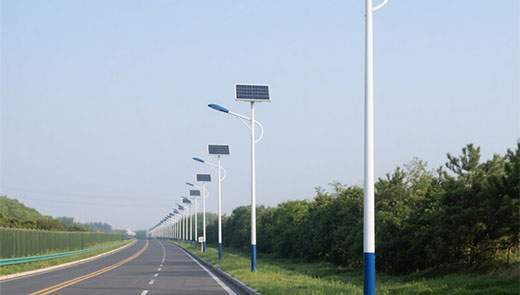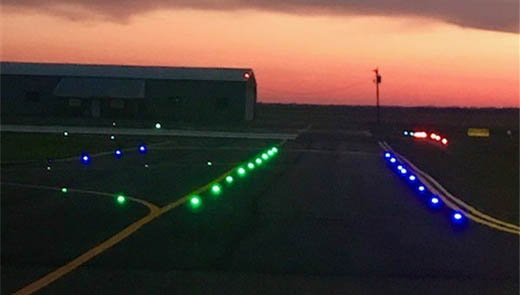Which Factors Are Considered in the Design of Road Lighting?
Road lighting serves as the "eyes of the night" for cities and the lifeblood of modern infrastructure, profoundly impacting safety, urban economy, and ecological protection. Its design must balance technical parameters like luminance, uniformity, and glare control with adaptability to diverse traffic conditions and regional environments. By integrating LED innovations and smart systems, it aims to create sustainable, efficient nighttime environments that enhance safety, drive economic vitality, and protect biodiversity.
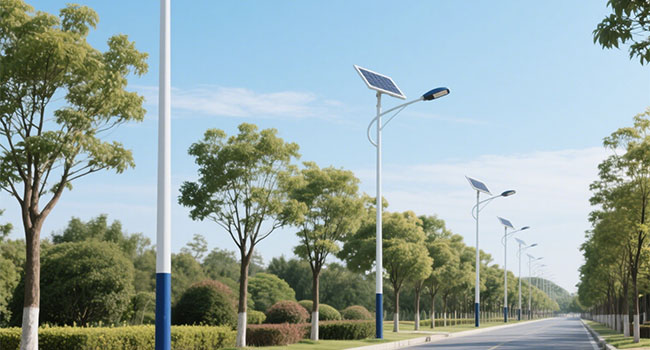
Why is Street Lighting so Important?
Road lighting is not only the “eyes of the night” of the city, but also the lifeblood of the infrastructure of modern society. Road lighting is not only the “eyes of the night” of the city, but also the lifeblood of the infrastructure of modern society. Its importance permeates every dimension of safety, security, economic development and ecological protection:
The “guardian” of life safety
Road lighting is the central safety barrier for nighttime traffic. Data show that on unlit roads, the rate of pedestrian collisions is more than four times that of well-lit roads, while scientifically designed lighting systems can reduce the rate of nighttime traffic accidents by 30%-45%. For example, the German highway through precise control of brightness (50 lux) and uniformity (≥ 0.4), with the full cut-off lamps and lanterns to inhibit glare, so that the accident rate at night compared with the pre-modification down 38%. In complex road conditions (such as curves and intersections), adequate lighting can shorten driver reaction time by 0.3-0.5 seconds, equivalent to reducing braking distance by 5-8 meters at 60 km/h, significantly reducing the risk of rear-end collisions and rollovers.
A “booster”for the urban economy
Lighting systems are a key engine for activating the night-time economy. After the City of London upgraded the lighting in the Oxford Street business district, nighttime traffic increased by 22% and average store turnover increased by 15%, confirming the logic of “light environment = business attraction”. At the same time, lighting on public safety to strengthen the role of direct impact on the vitality of the city - the U.S. Department of Energy study shows that adequate lighting can make parking lots, pedestrian walkways and other areas of the theft, robbery cases reduced by 30% -40%, the city of Chicago by increasing community lighting density, the night crime rate fell by 27% for two consecutive years, significantly improving the sense of security and willingness of residents to travel at night. The city of Chicago has seen a 27% decrease in nighttime crime for two consecutive years by increasing the density of lighting in the neighborhood, significantly improving residents' sense of safety and willingness to travel at night.
A “practitioner” of sustainability
Modern lighting technology is at the forefront of the green transition. Globally, the LED street light replacement program has reduced carbon emissions by more than 1 billion tons, equivalent to planting 50 million fir trees. In terms of ecological protection, through the full cut-off light fixtures and intelligent dimming technology, it can reduce the light interference around the astronomical observatory by 80%, and at the same time, reduce the number of insect deaths due to phototropic collision with streetlights by mistake by more than 30%, so as to safeguard the biodiversity.
Factors to consider in the design of road lighting
Luminance lighting levels
Main Roads/Highways: 15-50 lux lighting is required to ensure a clear view of high speed traffic. For example, the main lanes of the Tokyo Metropolitan Expressway in Japan use a constant brightness of 40 lux and require 50% of the area on both sides of the road to be ≥ 20 lux, effectively eliminating the “black hole effect” (the strong contrast between the brightness of the road surface and the surrounding darkness leads to drivers not being able to recognize the boundaries).
Residential area / pedestrian street: only 5-15 lux soft lighting. HDB estates in Singapore use 8 lux warm white LED luminaires to meet the safety of pedestrians and non-motorized vehicles at night, while minimizing light interference with residents' rest through low luminance design.

International Commission on Illumination (CIE) standards: emphasize the road on both sides of the 50% range of brightness to reach 50% of the average illumination of the road surface, to avoid the contrast between dark and light lead to driver misjudgment of the road conditions or missed obstacles.
Luminance uniformity
Uniformity (minimum luminance / average luminance) is a key indicator of lighting quality, which directly affects the degree of visual fatigue of drivers:
Main Roads: Uniformity needs to be ≥ 0.4, to ensure that there is no obvious dark area on the road. The spacing of luminaires on a main road in a city is too large (60 meters), resulting in a uniformity of only 0.25. After the renovation, the spacing was shortened to 40 meters, and the uniformity was increased to 0.45, and the visual fatigue index of the driver's eye movement monitoring showed that the visual fatigue index decreased by 22%.
Residential roads: uniformity ≥ 0.3 can meet the demand, allowing moderate brightness fluctuations, reducing the risk of light pollution while protecting the basic sight distance.
Glare limitation
Glare is divided into two categories: incapacitating glare (direct light leading to transient blindness) and uncomfortable glare (fatigue caused by prolonged light stimulation), with the latter being more easily overlooked but significantly more damaging:
International standard: Uniform Glare Rating (UGR) ≤ 22 for urban roads, and Threshold Incremental Increment (TI) ≤ 15% for arterial roads. Rotterdam, the Netherlands, through the application of full cut-off luminaires (light is only projected downward), the UGR from 28 to 20, the night traffic accident rate fell by 19% over the same period.
Technical means: Using shades, asymmetric optical design or full cut-off luminaires, the angle of light projection is precisely controlled (e.g. Philips luminaires limit the light to a range of 15° to 85° horizontally), reducing upward light spill and glare interference from oncoming vehicles.
The minimized light pollution
Full cut-off luminaire, designed with a shading design that limits upward luminous flux to less than 3%, preventing light from spilling out into the night sky or into residential areas, and with asymmetric optics that limit the angle of light throw to -15° to 85°, so that more than 90% of the light is directed to the road surface, reducing ineffective scattering. This design reduces driver reaction time to glare (by more than 0.3 seconds) and reduces the number of insects hitting streetlights by mistake (by up to 30%), simultaneously improving traffic safety and eco-friendliness.
Adaptation to traffic conditions
Urban Trunk Roads: As the arteries of traffic, 30-50 lux high brightness is required to ensure the vision of high-speed traffic, with 10-12 meters poles and 25-35 meters spacing, forming a continuous and uniform lighting belt. Narrow spacing design can reduce the curves, intersections of the dark zone, with full cut-off lamps and lanterns, effectively inhibit the glare interference when following the car, so that the driver on the lane boundaries of the recognition of the distance up to more than 80 meters.
Residential roads: 5-10 lux low-brightness warm white light, with 6-8 m poles and 40-50 m spacing, in order to meet the lighting needs of pedestrians and non-motorized vehicles at the same time, through the wide-angle lens to expand the coverage of a single lamp, to avoid light intrusion into the residence. As in the case of Singapore's HDB estates, this design can reduce nighttime light interference complaints by 75%.
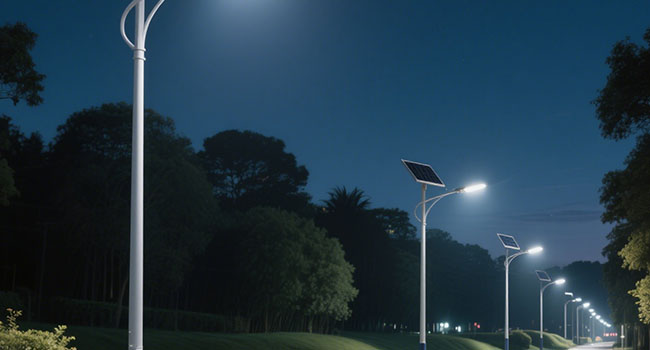
Highway tunnel: for the sudden change of light and dark scenes, the entrance section adopts 80-100 lux transition lighting, and through the intelligent dimming system, the brightness will be reduced to 50 lux in the middle of the tunnel in 3 levels, to alleviate the “Black Hole Effect” and “White Hole Effect”, so that the driver's visual adaptation time is reduced from 8 hours to 10 minutes. The “black hole effect” and “white hole effect” are mitigated by the intelligent dimming system, and the visual adaptation time of drivers is shortened from 8 seconds to 3 seconds.
Rural highway: adopts dynamic dimming technology, maintains 10-15 lux of basic brightness in daily life, when microwave radar detects vehicles approaching, the lamps within the range of 50 meters will be automatically raised to 30-40 lux, and the energy-saving mode will be restored after the vehicles have passed through for 5 minutes, which saves 85% energy compared with the traditional lighting and guarantees the safety sight distance of occasional traffic.
Standards for street lighting design
Core design parameter standards
|
Parameter |
Main Roads |
Residential Roads |
Pedestrian Areas |
|
Illuminance (lux) |
15–50 |
5–15 |
10–20 |
|
Uniformity |
≥0.4 |
≥0.3 |
≥0.3 |
|
UGR Value |
≤22 |
≤25 |
≤25 |
|
Color Temperature (K) |
4000–5000 |
3000–4000 |
3000–4000 |
|
CRI |
>70 |
>70 |
>70 |
Mainstream international standard system
|
Standard |
Applicable Region |
Core Requirements |
Special Specifications |
|
IESNA RP-8 |
North America |
Defines 6 road lighting categories; emphasizes climate adaptability (CRI > 70 in rainy areas) |
Dynamic dimming at tunnel entrances |
|
EN 13201 |
Europe |
Energy efficiency ≥ 100 lm/W; light pollution included in building permit reviews |
Mandatory sensor-based lighting in low-traffic zones |
|
CIE Standard |
Global |
Road classification (M/P classes) and lighting hierarchy principles |
Wide-beam fixtures recommended for rural roads |
Key adaptation dimensions for localized design
High latitude areas (e.g. Northern Europe): 3000K warm white light + high CRI (>80) to reduce visual fatigue during extreme night time in winter.
Tropical rainy areas (e.g. Southeast Asia): 4500K cold white light + anti-glare coated luminaire to reduce light scattering in hot and humid environments.
Mountain roads: due to the dense curves, the spacing between poles is shortened to 20-25 meters, and reflectors are added to assist illumination (e.g. Swiss Alpine roads).
Seaside Cities: the use of salt spray corrosion-resistant aluminum poles and sealed fixtures (e.g. Dubai Marina Boulevard), and the life of the equipment has been extended to more than 15 years.
Historic districts: e.g. Left Bank in Paris, where luminaires are designed to incorporate vintage elements while meeting modern glare standards of UGR≤19.
Ecologically sensitive areas: e.g. Kenyan wildlife reserve perimeter roads, where full cutoff luminaires + infrared sensors are used to minimize disruption to animal migrations.
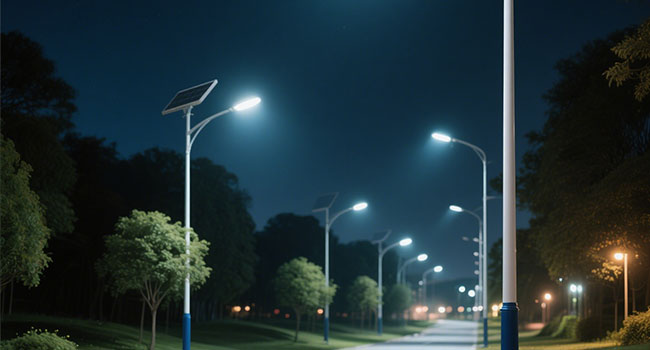
Innovations in LED street light designs
Smart lighting control
Internet of Things (IoT) technology drives scene adaptation to precision. The CityFibre system deployed in Amsterdam analyzes traffic video through AI algorithms and adjusts the brightness of luminaires in real time - automatically boosting the illumination of the platform area to 35 lux when it detects a bus approaching the station, and boosting the brightness of the entire roadway by 20% when it detects a rainstorm. The system reduces nighttime accident rates by another 12% and energy consumption by 65% compared to traditional solutions.
Optical and structural innovations
Multi-modal optical system: “Dual-mode lens” developed by Valeo (France), which can project strong light (50 lux) in high beam mode and switch to wide soft light (25 lux) in low beam mode to reduce glare interference during traffic meeting.
Adaptive lifting light pole: a Japanese company introduced the Adaptive lifting lamp post: hydraulic lifting lamp post introduced by a Japanese company, the height can be adjusted according to the season (12 meters in summer to avoid foliage shade, down to 8 meters in winter to enhance the light density), to achieve “zero artificial intervention” scene adaptation.
Modular
Modular design makes the fixture maintenance and scene upgrade more flexible. The light source, driver and heat dissipation module of Cree LED street light can be replaced independently. When the road is upgraded from low flow to high flow, only the high-power light source module needs to be replaced without replacing the whole fixture, which reduces the cost by 70%. At the same time, the application of recyclable aluminum lamp body and mercury-free chip makes the material recycling rate of retired lamps and lanterns reach 95%, which helps the city realize the sustainable mode of “lighting as a service”.
The essence of road lighting design is to build a safe, comfortable and environmentally friendly nighttime traffic environment through precise control of light. Incorporating light pollution control and scene adaptation into the basic design elements means avoiding the safety hazards brought by “light interference” and “design mismatch” from the source - for example, full cut-off luminaires can reduce light pollution while suppressing glare. For example, full cutoff luminaires reduce light pollution while suppressing glare, and dynamic dimming systems reduce energy consumption while adapting to traffic flow. Data shows that a fully optimized lighting system can reduce nighttime traffic accidents by 40%, reduce the impact of light pollution by 50%, and improve energy efficiency by 70%.

